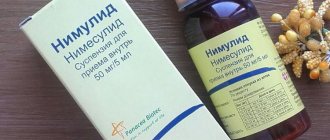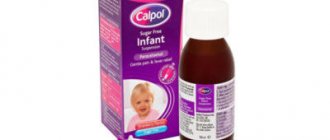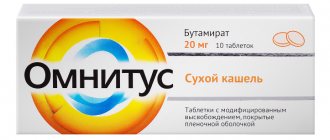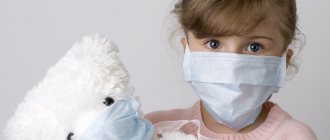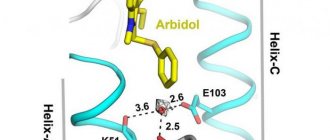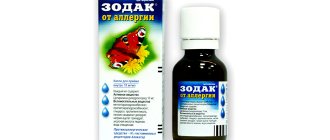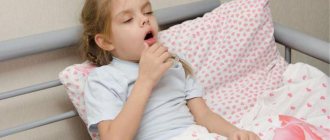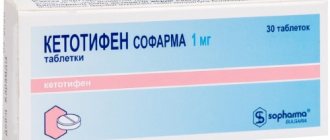- June 19, 2020
- Infectious
- Voloshchuk Natalya
There are many pathogenic microbes in the world that lead to the development of various diseases. In such cases, doctors prescribe antibacterial drugs to their patients. Adults are prescribed medications in tablet form; children are usually prescribed suspensions. One of these medications is the Cephalexin suspension. The drug, according to many reviews, is effective as it fights many types of pathogens.
Release forms and composition of the drug
The product is produced in 2 forms:
- Capsules – each of them contains 250 mg of the active ingredient.
- Powder (in granules), intended for the preparation of a suspension solution. It is sold in bottles of 40 g, which are designed to prepare 100 ml of suspension.
Cephalexin for children
The powder for preparing the suspension is white or white with a slight tint of yellow, has a sweet taste and a specific smell. The active substance of the drug is cephalexin.
The powder also contains sodium benzoate and saccharinate, several flavors to make it easier for children to take (apple, raspberry, strawberry, and tutti-frutti flavor are here), sucrose, iron dye, citric acid, sucrose, simethicone, and guar gum.
When interacting with water, it forms a yellow (sometimes with an orange tint) suspension with a pronounced fruity aroma.
Pharmacodynamics and pharmacokinetics
The antibiotic is well and quickly absorbed from the stomach after administration. It has high bioavailability - 90-95%. Eating food reduces the absorption of the medicine. 1 hour after administration, the maximum level of antibiotic in the blood is reached.
The therapeutic effect lasts for 6 hours (in the absence of problems with kidney function). The drug is characterized by uniform distribution in all tissues of the body. The highest concentrations of the antibiotic are observed in the kidneys and liver.
The antibiotic cannot be metabolized - it is almost completely (80-100%) excreted unchanged from the body in the urine within 6-8 hours. If there are problems with the kidneys, the half-life can increase to 5-30 hours.
Exceeding permissible doses
The drug "Cefalexin" must be taken in the dosage prescribed by the doctor. As permissible doses increase, side effects will develop:
- Nausea, which is accompanied by vomiting.
- Disruption of the digestive system.
- Development of seizures.
If such symptoms occur, symptomatic treatment is necessary. To do this, the victim’s stomach is washed and a sorbent is given. If necessary, hemodialysis is performed. You also need to urgently go to the clinic to monitor the activity of the kidneys and liver, and also take tests for blood clotting.
Indications for use
Cephalexin for children, reviews of which confirm its effectiveness, is used for diseases caused by infection.
Among them:
- Diseases of the respiratory system, including inflammation and abscess of the lungs, bronchitis, pleural empyema (accumulation of pus) and others.
- Diseases of the nasopharynx, oropharynx and ears (for example, otitis media, pharyngitis, tonsillitis).
- Diseases of the genitourinary organs (cystitis, urethritis, inflammation of the vaginal mucosa, gonorrhea).
- Lesions of soft tissue (including skin) - furunculosis, purulent inflammation), inflammation of the lymph nodes, dermatitis.
- Infection of bone tissue and joints.
- Meningitis and other infections caused by pathogenic microflora, which are suppressed by antibiotics.
Use during pregnancy and breastfeeding
The drug Cephalexin is not prescribed to women during pregnancy. This is due to the fact that cefasporin drugs easily penetrate the placental barrier and can cause toxic damage to the internal organs and nervous system of the fetus.
During breastfeeding, the use of Cephalexin in the form of a suspension is possible only if the expected benefit for the mother outweighs the possible risks for the baby. If negative side reactions occur in the baby, treatment with the drug is stopped or lactation is completed.
At what age can the drug be used?
Cephalexin for children (reviews indicate the effectiveness of the drug in the treatment of young children) is approved for use from 6 months. Only the treating pediatrician can prescribe an antibiotic, based on the symptoms and type of disease. The drug should be taken under the constant supervision of a doctor.
When used in the treatment of children under 10 years of age, Cephalexin is used in suspension form. According to reviews, it is very easy to prepare - just add clean, drinking water to the bottle with the powder up to the indicated mark and shake everything well.
Reviews
If, after reading the instructions for Cephalexin syrup, there is not enough information for you, below are reviews from parents who used this antibiotic in the form of a suspension.
- Irina: “My child was recently diagnosed with otitis media. The doctor prescribed Cephalexin. At first I was afraid to give it because of the large number of side effects, but then I decided to give it. A very good medicine in the form of a suspension. My daughter drank it well and quickly recovered.”
- Olga: “I try to do without using antibiotics, but this time my son got seriously ill. The pediatrician prescribed children's Cephalexin, 1 teaspoon 3 times. The medicine is cheap, but works well. Already on the third day, the child’s condition improved, and the wheezing disappeared.”
- Christina: “My daughter fell ill with a sore throat in kindergarten. Red throat, fever, tears. The local pediatrician prescribed Cephalexin. The suspension was taken 4 times a day, 5 ml. Relief came quickly, the temperature dropped. The child was able to eat and drink normally. If your doctor prescribed Cephalexin for a sore throat, I recommend using this drug.”
- Anna: “My daughter (3.5 years old) was diagnosed with obstructive bronchitis. After the examination and tests, the doctor recommended taking a course of antibiotics. She prescribed Cephalexin. A medicine with a pleasant smell and taste. I did not observe any side effects. Helped quickly."
- Elena: “My children get sick often. Infectious diseases are also common. I don’t engage in amateur activities and I don’t treat colds with antibiotics. But there are times when you can’t do without them. Recently, the doctor recommended Cephalexin. Inexpensive and effective. I recommend."
From a huge number of antibacterial drugs, it is difficult to choose one that is ideal for a child and will not cause undesirable consequences.
In this regard, Cephalexin is one of the safest and most effective drugs. If you follow the specialist’s recommendations, the correct dosage and a strict treatment regimen, you can not fear complications.
Instructions for use, dosage
The method of administration, as well as the dosage of the antibiotic, is determined individually by the treating pediatrician - the doctor will take into account the symptoms of the disease, its severity and the location of the infection.
The table below shows the standard dosage for the treatment of children of different age categories:
| Patient age | Dosage (daily) |
| Children aged 6 months and older. and up to a year | 500 mg or 0.5 g. |
| 1-6 years | 0.5-1 g. |
| 6-10 years | 1 year |
| 10-14 years | 1-2 years |
The standard dosage for adults is considered to be from 250 to 500 mg (must be taken every 6 hours). The daily dosage of the drug should not be less than 1000-2000 mg (or 1-2 g). If necessary, it may be increased to 4 g (by prior agreement with the doctor). The minimum course of antibiotic treatment is 1-2 weeks.
The use of antibiotics by children has several other features:
- If your body weight is less than 40 kg, you are allowed to take 25-100 mg/kg 4 times a day. in a day.
- When treating otitis, the dosage is 75 mg/kg (4 times per day).
- For pharyngitis (if the disease is caused by streptococci, as well as for skin diseases), the daily dose is divided into 2 doses.
- If the infection is severe and there is no improvement in well-being in the first 2 days, the dosage is increased to 100 mg/kg (the medicine is taken up to 6 times a day).
The product must be taken 30-60 minutes before. before eating with water.
Dosage and permissible frequency of administration
How to give the suspension to a child? This antibiotic (250 mg/5 ml) is recommended to be taken every 6 or 8 hours, but not more than 3-4 times a day, at a strictly defined time. Suspension dosage: children are prescribed 25-40 mg/kg body weight half an hour to an hour before meals.
Each age has its own dosage:
- up to a year, give 2.5 ml of suspension three times a day;
- 5 ml – baby 1-3 years old;
- a child 3-6 years old should receive 7.5 ml, at least 3 times a day;
- for adolescents and children over six years of age, the daily dose of the drug is 30 ml, divided into three doses.
The drug must be taken for at least 5 days after you feel better. This will ensure that all pathogens have died and have not developed resistance to this antibiotic.
In some cases (on the recommendation of a pediatrician), it is possible to divide the daily dose of the medicine into two doses, but with an interval of at least 12 hours.
Side effects
Cephalexin, like any drug, can cause a number of side effects:
- allergic manifestations in the form of urticaria, rash, itching, swelling.
- Headache, possible dizziness.
- Decreased appetite, feeling of dry mouth.
- Attacks of vomiting, nausea.
- Indigestion, abdominal discomfort.
- Candidiasis of the mucous membranes of the intestines and oral cavity.
- Development of jaundice, hepatitis.
- Increased bilirubin levels.
- Drowsiness, feeling tired.
- Disruption of the hematopoietic process (anemia, decreased levels of platelets, lymphocytes and neutrophils in the blood).
- Joint pain, connective tissue infection.
- Feverish condition.
If these symptoms do not go away within 1-2 days, you should consult a doctor.
Overdose
Cephalexin for children, reviews of which indicate its safety when taken correctly, can cause a sharp deterioration in well-being in the event of an overdose.
You should stop taking the antibiotic if:
- constant feeling of nausea;
- prolonged vomiting;
- diarrhea;
- severe pain and discomfort in the upper abdomen;
- the presence of blood in the urine.
These symptoms require seeking medical help. At home, you can take activated carbon or other sorbents. In severe cases of overdose, treatment in a hospital under the supervision of medical staff may be necessary.
Cephalexin for children
In pediatric practice, the oral route of drug administration is the main route of administration, as it is the least traumatic. For this, there are special children's forms - syrups and suspensions. cephalosporins occupy a leading position because they have a wide spectrum of bactericidal action, are well tolerated, are resistant to beta-lactamases , are easy to dosage, and have rare side effects.
Cephalosporins are an alternative to penicillins in the treatment of respiratory tract and ENT infections. The main area of their use in pediatric practice is not severe infections. Thus, Cephalexin for children is used for tonsillitis , sinusitis , otitis , cervical lymphadenitis , streptococcal or staphylococcal skin infections . It has been noted that penicillins , which are used to treat angina , are not as effective as cephalosporins , which cause eradication of group A β-hemolytic streptococcus and effective recovery of the child.
Cephalosporins remain in the tissues of the tonsils in bactericidal concentrations, while the concentration of penicillin decreases rapidly. Sinusitis is a common complication of ARVI and occurs in 10% of sick children. For bacterial sinusitis, antibiotics (in this case, cephalosporins ) are a mandatory component of therapy. The suspension can be prescribed to children from birth, but with extreme caution during the first 6 months. The recommended doses are given above, but the doctor, based on the situation, adjusts the dose.
special instructions
Taking an antibiotic will be most effective and safe if you follow some recommendations:
- do not take certain tests because the drug may give a positive reaction (for example, to antibodies, glucose in the urine);
- if the functioning of the kidneys is impaired, a slight accumulation of the drug may occur, so it is necessary to constantly monitor this and, if necessary, adjust the dosage;
- dosage adjustment is also required for people with diabetes mellitus, since the medicine contains sucrose;
- Drinking alcoholic beverages is not recommended;
- It is necessary to drive vehicles and operate various mechanisms with caution, because the antibiotic can cause dizziness and headaches.
Drug interactions
The drug is not recommended to be taken simultaneously with other antimicrobial drugs and diuretics (ethacrynic acid, furosemide), since the risk of kidney damage increases.
Cephalexin affects the effects of medications aimed at lowering blood sugar. The antibiotic also enhances the effect of anticoagulants and reduces the blood clotting index.
Anti-inflammatory drugs (in particular, indomethacin) and salicylic acid-based analgesics reduce the rate of elimination of Cephalexin from the body.
Possible negative reactions
The drug is usually well tolerated by children. But in some cases, negative symptoms may appear. These include:
- Anemia, leukopenia, pancytopenia.
- Development of allergic reactions.
- Edema.
- Pain in the head, impaired consciousness, development of excitability.
- Dizziness, development of weakness and convulsions.
- Stomach upset, loss of appetite, nausea, which may be accompanied by vomiting.
- The appearance of stomatitis, gastritis or colitis.
- Development of jaundice.
- Burning and itching of the skin, Stevens-Johnson disease.
- Pustulosis, erythema.
- Disorders of the kidneys and organs of the genitourinary system.
- Nephritis, nephropathy.
- Development of arthritis, joint pain.
- Itching in the anal area, vaginal discharge.
- The appearance of fever.
During drug therapy, it is not recommended to take blood and urine tests, as they may be incorrect.
Analogs
Cephalexin for children (reviews indicate that the drug does not always show the required effectiveness) has several analogues:
- Ospexin. The antibacterial agent is on sale in capsule form, as well as in powder form (used to prepare a solution taken orally). The main active ingredient is cephalexin. Ospexin is used for systemic use in the presence of infections of the respiratory tract, nasopharynx, oropharynx and inner ear, soft tissues, urinary system, genital area, joints, oral cavity and bones. The standard dose for children weighing less than 40 kg is 25-50 mg/kg. This amount is divided into 2-4 doses per day. To completely destroy pathogenic microflora and consolidate the results obtained, treatment must be carried out for at least 7 days (without breaks).
- Keflex is a semi-synthetic antibiotic with the active substance in the form of cephalexin. It has a powerful bactericidal effect, destroying cells of pathogenic microflora. The drug is available in the form of capsules (for use by adult patients) and in the form of a suspension, which is used in the treatment of children. The antibiotic is indicated for use in many infectious processes in the body that are caused by microorganisms that are sensitive to it. For the treatment of children over 12 years of age and adults, 250-500 mg of the drug is prescribed every 6 or 12 hours. The dosage regimen for young children is established by the treating pediatrician. The antibiotic is taken half an hour before meals. The duration of treatment is 1-2 weeks.
- Zeff is another antimicrobial agent based on the substance cephalexin. The medicine is sold in several forms (these can be tablets, granular form for preparing a suspension, as well as powder for preparing an injection solution). The medicine is used in cases of diseases of the respiratory system, genitourinary organs, joints, bones and muscle tissue, which are caused by an infection of bacterial origin. The antibiotic should not be taken if there is hypersensitivity to the components of the drug. How safe and advisable it is to take an antibiotic during pregnancy, during the lactation period, with renal failure, as well as in the treatment of children who are less than 6 months old, can be determined by a doctor.
The antimicrobial drug Amoxicillin has an almost identical effect on the body as Cephalexin. These 2 drugs are part of the same group of antibiotics called cephalosporins. The active component of Amoxicillin is amoxicillin trihydrate. After administration, it is completely absorbed from the stomach and has a therapeutic effect within 1-2 hours.
An antibiotic is used on its own to treat inflammatory diseases (tonsillitis, digestive system diseases, gynecological infections, gonorrhea, bronchitis and others) caused by infection of bacterial microflora.
The drug also has an effective effect as part of complex treatment with Metronidazole (an antimicrobial drug for the treatment of infections caused by protozoa) for diseases such as gastric ulcers, duodenal ulcers and chronic gastritis, which are in the acute phase.
The daily dosage of the antibiotic depends on the age of the patients:
- If children are from 2 to 5 years old, they need to take 125 mg of the drug;
- children aged 5-10 years – 250 mg;
- For adults and children over 10 years of age, a dose of 250-500 mg is indicated.
In case of severe disease, the maximum dosage can be no more than 1 g. When taking the antibiotic by children weighing less than 40 kg, the dosage will be 20-100 mg/kg. This amount of antibiotic should be divided into 2-3 doses. These regimens can be adjusted by your attending physician.
The antibiotic Oxacillin has a similar therapeutic effect to Cephalexin.
Its active component is oxacillin sodium, which inhibits the cells of various bacteria (staphylococci, streptococci, bacterial bacillus that causes diphtheria, gonorrhea, meningococcal infection).
The main indication for the use of antibiotics is:
- The presence of an infectious disease accompanied by an inflammatory process, which is caused mainly by staphylococci.
- Suspicion of infectious diseases of soft tissues, skin, joints, bones, bacterial meningitis, syphilis, meningitis, cystitis, pneumonia, sepsis, cholecystitis, infected burns, endocarditis or sinusitis (the drug is taken until laboratory results are obtained).
The standard antibiotic dosage for the treatment of children weighing less than 40 kg is 12.5-25 mg/kg (taken every 6 hours). For adult patients and children weighing over 40 kg, the daily dosage is 0.5-1 g every 4-6 hours. Oxacillin is prohibited for use if you are allergic to the drug or its individual substances.
It is taken with caution when:
- bronchial asthma;
- chronic renal failure;
- bearing a child;
- lactation period.
Contraindications for children's medicines
If the instructions are strictly followed, Cephalexin is an absolutely safe antibiotic for children.
But there are some contraindications:
- allergy to drugs of the penicillin and cephalosporin group;
- renal failure;
- enterocolitis;
- liver damage;
- intestinal disorders;
- individual intolerance.
For babies under 6 months of age, the medicine is prescribed with extreme caution and only under the supervision of a pediatrician.
Terms, conditions of sale and storage
The antimicrobial drug is sold from pharmacies with a doctor's prescription.
To prevent the effectiveness of the medicine from decreasing, you must adhere to simple storage rules:
- The place should be dry and out of direct sunlight.
- The optimal storage temperature is 15-25 0C.
- The prepared suspension solution can be used for 2 weeks - it can be stored in the refrigerator or at room temperature (it must be shaken well before each use).
- Do not use the medicine after the expiration date, which is 3 years from the date of manufacture.
Price
In online pharmacies, the average cost of an antibiotic produced in the form of granular powder (40 g) is 60 rubles. The price of the medicine in capsules depends on the concentration of the active substance in 1 capsule. So, for 16 capsules with 250 mg you will have to pay about 80 rubles. The price of the same number of capsules, but with a substance concentration of 500 mg, starts from 70 rubles.
The antimicrobial drug Cephalexin is used to treat a variety of infectious diseases. According to reviews, it has an effective effect from the first use and is easily tolerated by children.
